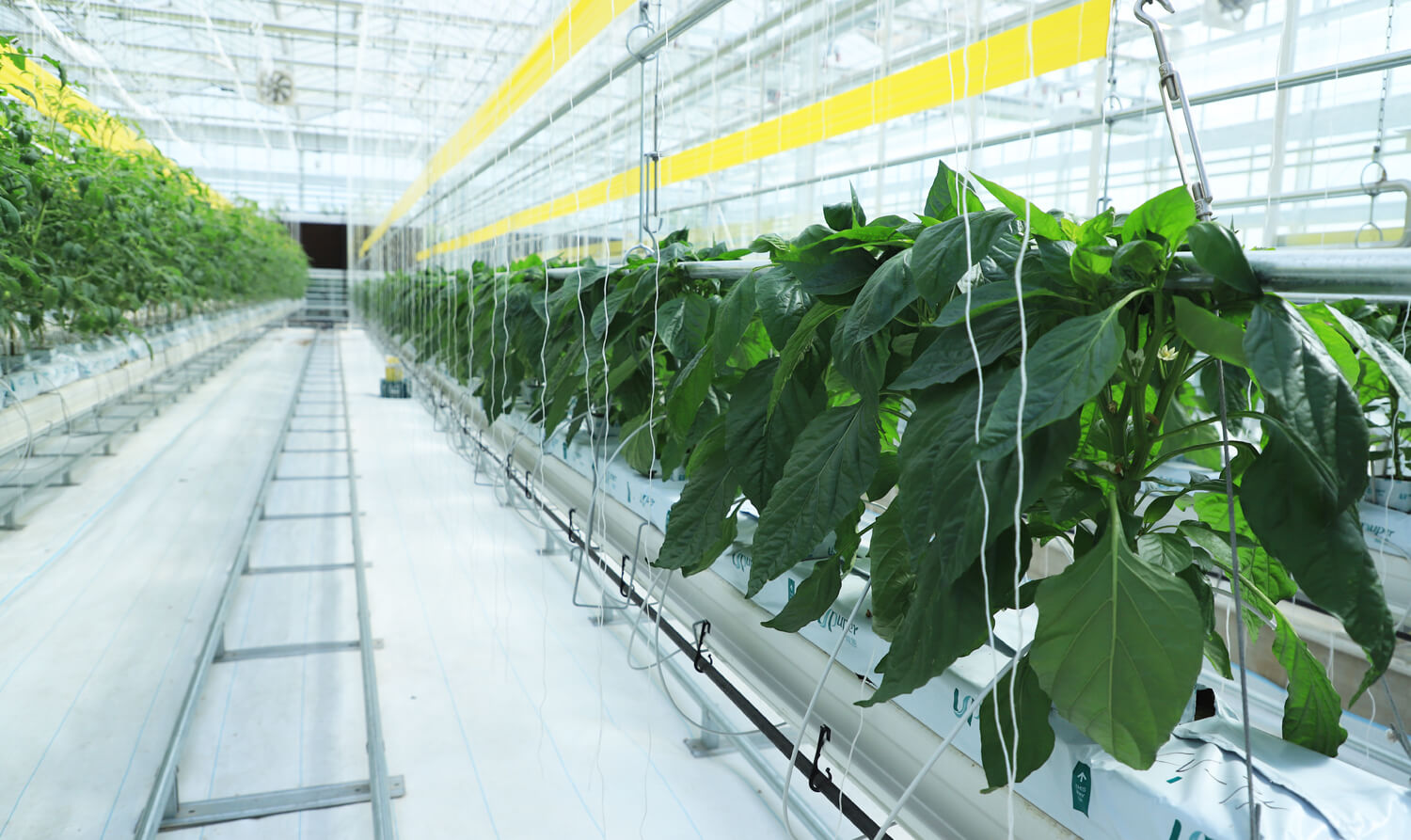As we mentioned in the last article, the root environment in soilless substrates directly affects the yield and quality of crops. Different substrates provide different environments for crops. At present, 70~80% of Chinese soilless cultivation market uses coconut as substrate, because when growers followed guide of foreign greenhouse planting technology, they also extend to use of foreign substrates in the guide. And coconut coir mostly imported from India, Sri Lanka, Indonesia, these products are convenient to transport with lower price, so it is widely used.
But in the Netherlands, the largest country for soilless cultivation, 2/3 of the greenhouses still use rock wool as a cultivation substrate. So why has rock wool become a favorite substrate for greenhouse grower in the developed world? There must be a reason for this.
First of all, rock wool is an inorganic substrate, coconut coir is an organic substrate, and this is the most essential difference between them. Secondly, the coconut coir raw material is taken from coconut tree, which contains a lot of potassium, sodium and chlorine, the EC value in the untreated coconut coir can reach to 6ms/cm, and generally as a suitable growing environment, it needs EC value in 1.5~3.5ms/cm, so before planting, people need to use a lot of water to wash the coconut coir in order to achieve the requirement of being able to use. The rock wool only needs to be soaked in a suitable nutrient solution before planting to adjust the pH and the soaked solution can also be reused for irrigation.
We further analysis the substrate with some experimental data in below:
We compared rock wool with coconut coir for trial planting with the same variety of tomatoes, keeping the same irrigation and nutrient solution regimen and other operational management consistent. The physical and chemical properties of the substrates were measured before and after planting such as capacity, total porosity, aeration porosity and water-holding porosity. The pH was measured with a pH meter and the EC value was measured with a conductivity meter.
Accurate control:
The nutrient composition of the first-time soaked rock wool and coconut coir was analysed. From the table below we can see that rock wool as an inert substrate, had very little effect on its nutrient solution and the composition of the nutrient solution within the soaked or returned in rock wool did not differ much from the original solution, However coconut coir as an organic substrate, it had a significant change in composition with potassium, sodium and chloride concentrations compared to the original solution, it increased by 3.3, 7.3 and 22.6 times. The other concentrations had little effect. Therefore, the rock wool substrate can be accurately controlled during the planting process by analyzing the elements of the recovered liquid and adjusting the nutritional requirements of the plant at different stages, resulting in a better quality crop.


Porosity comparison:
Analysis of the physical/chemical properties of the substrate before and after 5 months of cultivation of tomatoes shows from the table below. The porosity of rock wool is better than that of coconut coir and both have more desirable water retention and aeration characteristics. By measuring the amount of return liquid throughout the day, under the same irrigation conditions, coconut bran absorbs 5-7 times than its own weight, while rock wool can absorb 10-15 times than its own weight. Therefore, rock wool provides a stable and lasting supply of nutrients to the crop during cultivation and makes the plant's root system powerful.


Comparison of water content and electrical conductivity (EC)
By tracking the difference in water content and electrical conductivity during the cultivation process, it was found that the water content of coconut coir was generally between 55% and 75%, while rock wool was between 65% and 80%. The EC value of coconut coir cultivation substrate varied in the range of -0.1-0.1 ms/cm per day, while that of rock wool varied in the range of -0.02-0.02 ms/cm per day, the variation range were small and EC values were stable. Therefore, in the process of planting with rock wool, irrigation solutions with reduced irrigation frequency can be adopted to reduce the input of irrigation costs.

Finally, coconut coir growing solutions are not replicable. Coir is supplied from a variety of suppliers with different brands and batches. It may have a completely different nutrient content and pH value. This is challenging for growers who are seeking consistency in product quality and high mechanization, process and automation trend. This explains why rock wool substrates are still widely used in developed countries abroad with the high speed agricultural development today.
Of course, for China, the promotion and application of new materials requires a process, we should not only maintain the mentality of learning advanced technology, but also dare to do experiments and innovations, so that the future of Chinese agriculture will have a more bright future.












